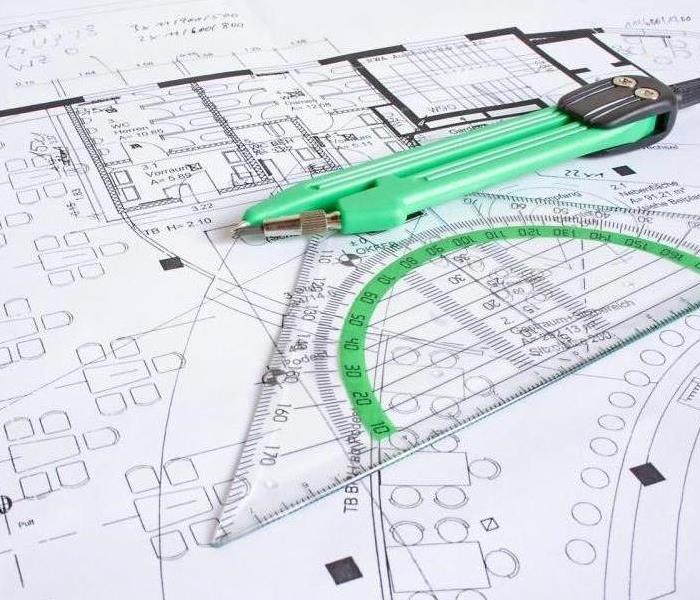Why Choose SERVPRO of Torrance for Your Reconstruction Needs?
12/4/2024 (Permalink)
When your property suffers damage from water, fire, storms, or mold, cleanup is just the first step. The next, equally important phase is reconstruction—restoring your home or business to its original condition or even better. That’s where SERVPRO of Torrance shines.
Our team doesn’t just stop at mitigation; we provide seamless reconstruction services to take your property from disaster to "Like it never even happened." Here’s why SERVPRO of Torrance should be your go-to choice for reconstruction.
1. End-to-End Restoration Services
Unlike many restoration companies, SERVPRO of Torrance offers a full-service solution. We handle the entire process, from initial damage cleanup to the final touches on your reconstruction project.
- Streamlined Process: No need to juggle multiple contractors. We coordinate every step, ensuring efficiency and consistency.
- Expert Collaboration: Our reconstruction team works closely with mitigation specialists to ensure a smooth transition between cleanup and rebuild.
2. Local Expertise with National Resources
SERVPRO of Torrance is locally owned and operated, which means we understand the unique challenges of our area. Whether it’s fire damage from dry conditions or water damage from coastal storms, we’ve seen it all and know how to address it.
- Community Focus: We’re invested in helping Torrance and surrounding communities thrive.
- National Support: Backed by SERVPRO’s extensive network, we bring advanced technology and resources to every job.
3. Skilled and Licensed Professionals
Reconstruction requires specialized expertise, and SERVPRO of Torrance delivers. Our team includes licensed and insured professionals with experience in a wide range of building trades.
- General Contracting: From framing and drywall to painting and flooring, we can rebuild your space from the ground up.
- Specialized Repairs: We handle complex projects, including custom cabinetry, and structural repairs.
- Code Compliance: Our work meets or exceeds local building codes and regulations, ensuring safety and longevity.
4. Customized Solutions
Every property and situation is unique, which is why we take a personalized approach to reconstruction.
- Detailed Assessments: We evaluate the damage and provide a clear, itemized plan for repairs.
- Tailored Designs: Whether you want to restore your property to its original state or make upgrades, we’ll work with you to achieve your vision.
- Flexible Scheduling: We aim to minimize disruptions to your life or business during the rebuilding process.
5. Focus on Quality and Durability
Reconstruction is more than just replacing damaged materials—it’s about creating a space that’s built to last.
- Premium Materials: We use high-quality materials to ensure durability and aesthetic appeal.
- Attention to Detail: From matching paint colors to finishing trim, we take pride in the small details that make a big difference.
- Customer Satisfaction: Your happiness is our priority. We won’t consider the job done until you’re completely satisfied.
6. Insurance Expertise
Navigating insurance claims can be complicated, especially during a stressful time. SERVPRO of Torrance works closely with insurance companies to make the process as smooth as possible.
- Comprehensive Documentation: We provide detailed estimates and progress reports for your insurer.
- Preferred Vendor Status: As a trusted partner for many insurance companies, we help expedite approvals and payments.
- Advocates for You: We communicate directly with your adjuster to ensure fair and accurate claim handling.
7. Commitment to Safety and Cleanliness
Reconstruction can be a messy process, but we prioritize safety and cleanliness on every job site.
- Debris Management: We remove waste materials promptly and responsibly.
- Safe Work Practices: Our team follows strict safety protocols to protect your property and everyone on-site.
- Post-Job Cleanup: We leave your property spotless, so you can start fresh in your newly restored space.
8. Trusted Name in Torrance
SERVPRO of Torrance has earned a reputation for excellence in restoration and reconstruction.
- Community Reviews: Our customers consistently praise our professionalism, quality work, and friendly service.
- Local Knowledge: With years of experience in Torrance, we understand the specific needs of our community.
Choosing the right reconstruction partner is vital to ensuring your property is restored to its full potential. With SERVPRO of Torrance, you get a team that combines local expertise, skilled craftsmanship, and a commitment to customer satisfaction.
Whether you’re recovering from a disaster or simply looking to renovate, SERVPRO of Torrance is here to rebuild your space—and your peace of mind. Contact us today to learn more about our reconstruction services and see why we’re the trusted choice for Torrance and beyond.
Let us help you make it “Like it never even happened.”






 24/7 Emergency Service
24/7 Emergency Service
